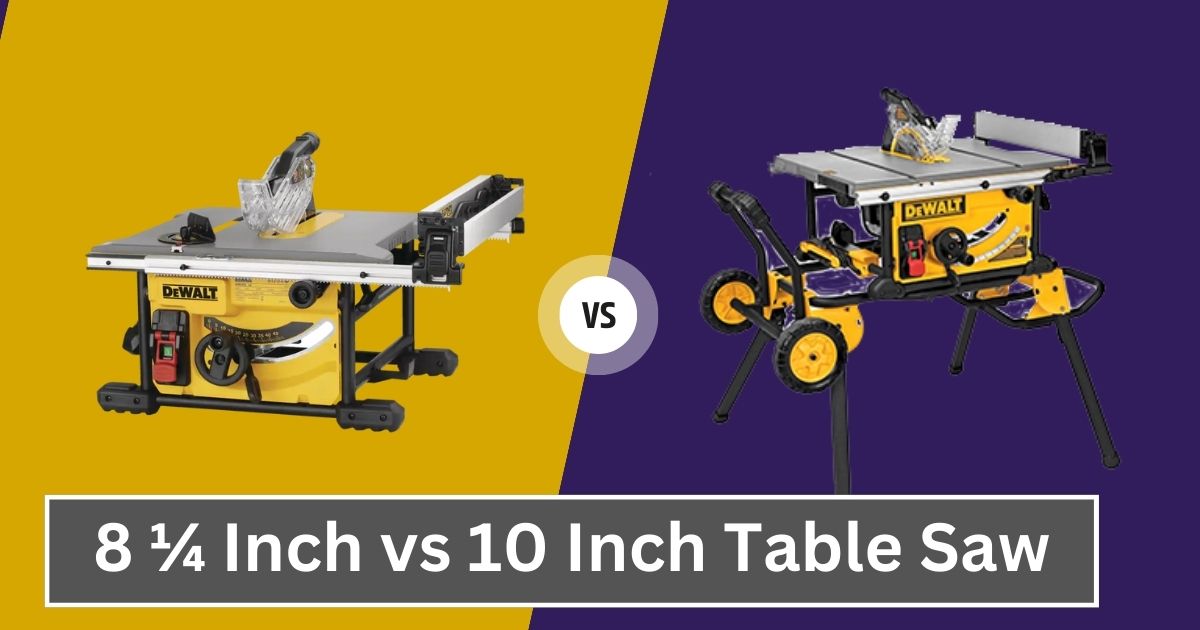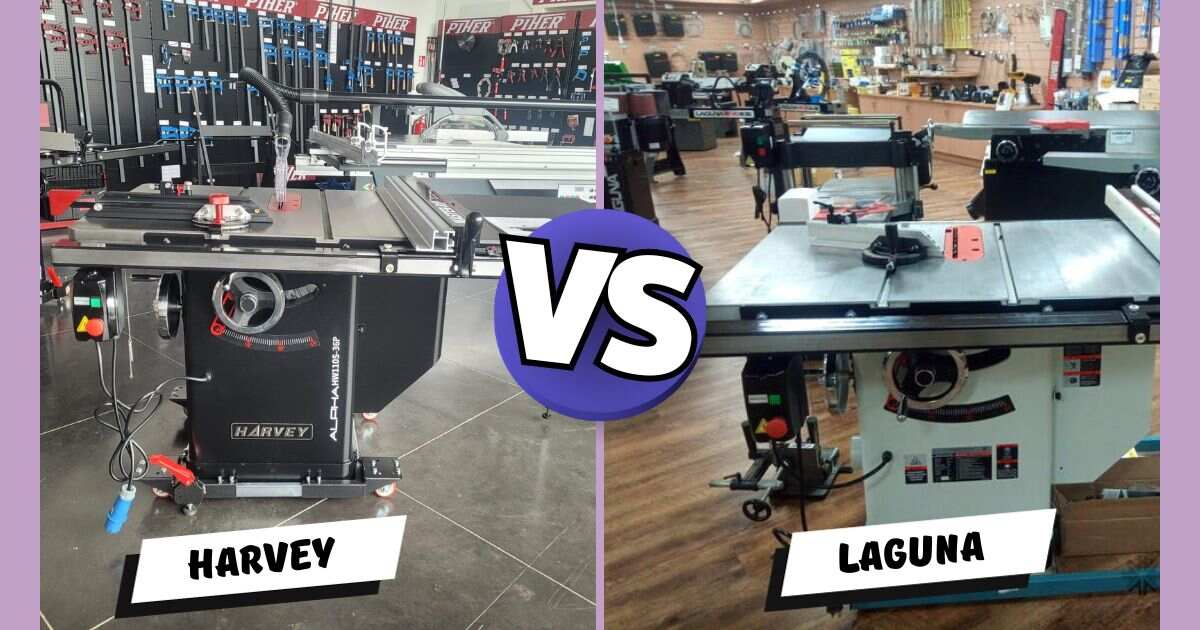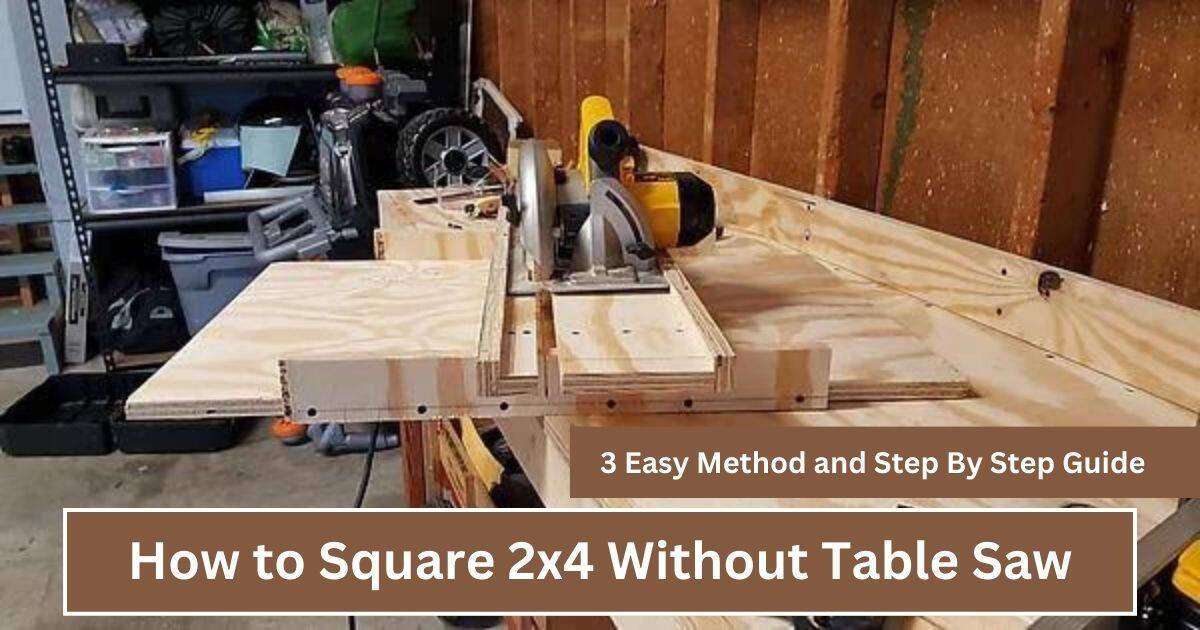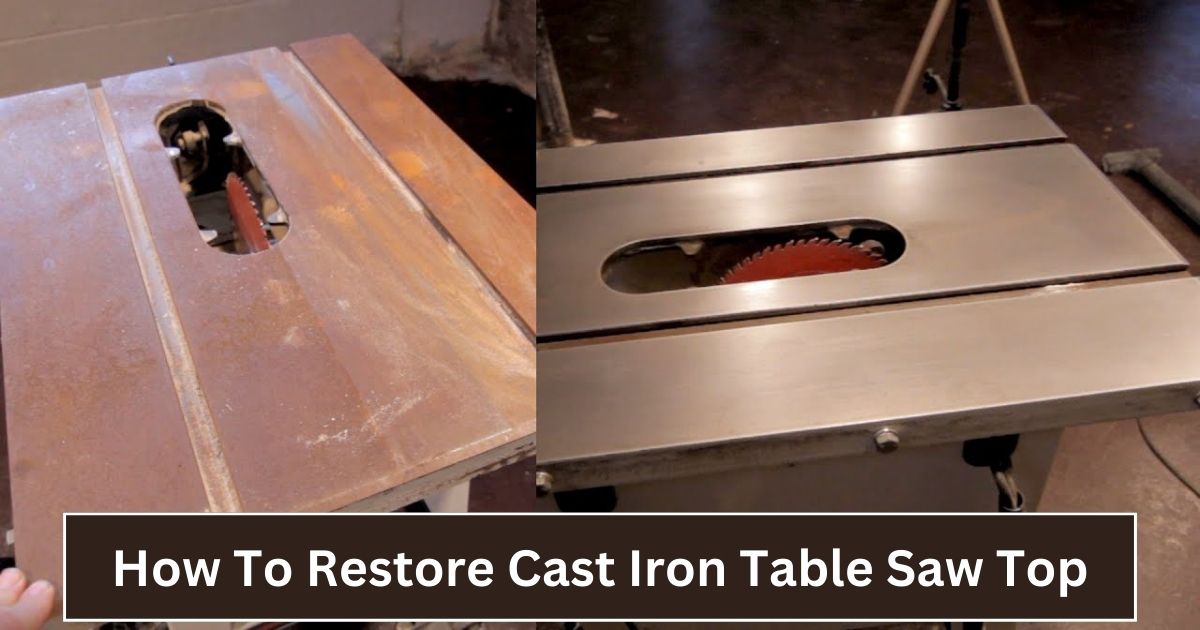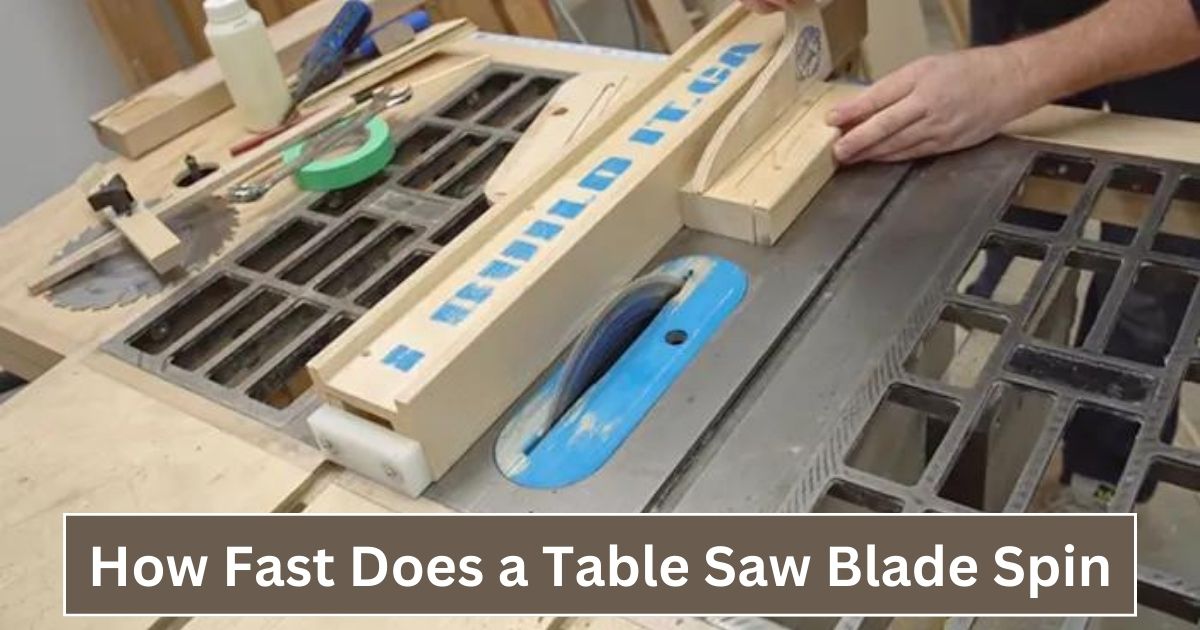The safety system works well on both the 8 ¼-inch and 10-inch table saws, and they do great work. The difference in size, though, means that one is better than the other.
The 8 ¼-inch saw has a higher RPM, and even though it has a small width, it cuts very well and smoothly while still being small and inexpensive. The 10-inch saw, on the other hand, is strong, can cut deeper and lighter wood, and can rip more materials.
Let’s see what are the differences between 8 ¼ Inch vs 10 Inch Table Saw. Table saw and tell you about their pros and cons so you can easily choose one that fits your job and your budget.
Differences Between 8 ¼ Inch vs 10 Inch Table Saw:
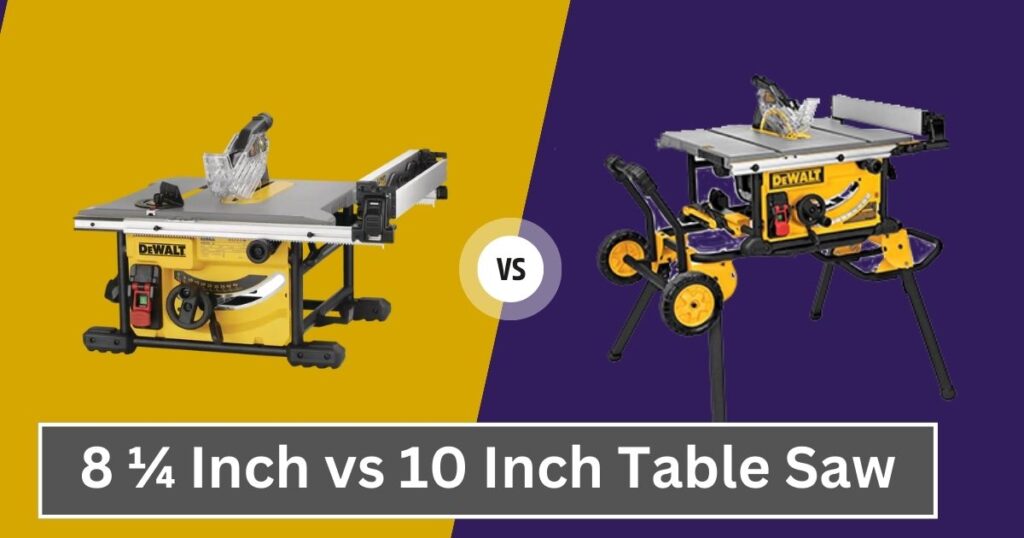
1)Size and Weight:
The 10-inch table saw is bigger and heavier than the 8-1/2-inch table saw.
Both saws, though, are fixed and weren’t made to be moved around much. The 8 ¼ inch table saw, on the other hand, is easier to move around and can be used outside because it is smaller, lighter, and electric.
RMP:
The blade of a table saw spins about 3000 to 4000 times per minute. The 8 ¼ and 10 table saws both have the same amount of motor power, but the 8 ¼ table saw has smaller blades than the 10 table saws, so it spins faster and at a higher RPM, and it has a higher torque rate. It runs at about 5800 RPM when it’s not loaded.
Not so with a 10-table saw, which runs at about 4800 RPM with little torque.
2) Size of the Blade:
The 10-inch table saw has longer blades than the 8-1/4-inch table saw. An 8 ¼ inch table saw has a blade that is 8 ¼ inches long. The 10-table saw, on the other hand, has a 10-inch blade.
3) Cutting Depth:
Because of this, the 8 ¼-inch has a thinner blade and can’t cut as deeply as the 10-inch. At 90 degrees, a 10-inch table saw can cut up to 3 1/2 inches, and at 45 degrees, it can cut up to 2 1/4 inches.
The 8 ¼-inch table saw, on the other hand, can cut up to 2 1/2 inches at 90 degrees and 1 3/4 inches at 45 degrees.
4) Cutting Capacity:
The 8 ¼ inch table saw can’t rip as well as bigger saws because it’s smaller. With the 8-1/4-inch table saw, you can rip cut up to 24 inches. The 10-inch table saw, on the other hand, lets you rip cut up to 32-1/2 inches to the right and 22 inches to the left of the blade.
5) Dado or Thinner Woodcut Blade:
The 8 ¼-inch table saw doesn’t work with Dado blades, so a smaller cut isn’t as good for it. For a table saw to work with a dado blade, the blade-supported table saw needs to be longer than the blade.
Because of this, the 10-inch table saw has bigger blades than the dado blades. You can attach the dado blades to it to cut smaller wood.
6) Availability:
Another important thing to think about when deciding between 8 ¼-inch and 10-inch screens is how easy they are to get. Not as many people can get an 8 ¼-inch as a 10-inch because not as many companies make them.
This 8-1/4-inch table saw is only made by DeWalt, Skil Saw, and RYOBI. A lot of different companies, like DeWalt, Skil Saw, BOSCH, RYOBI, Delta, and more, are the only ones that make the 10-inch table.
7) Price:
The 10-inch table saw costs more than the 8-and-a-half-inch one. It will cost around $300 for a good 8 ¼-inch corded one and $600 for a wireless one.
A good 10-inch, on the other hand, will cost between $500 and $1000. Spend more than $2,000 on hard work, though.
Pros and Cons In Comparison to 8 ¼ Inch vs 10 Inch Table Saw:
8 ¼-inch Table Saw:
The 8 ¼-inch saw has 15 AMP high-torque motors that can be plugged in normally. They can cut wood and lumber with a lot of force. It’s small and light, and there’s even a mobile version that you can take with you anywhere.
Pros:
- Make certain that the cutting is smooth and great.
- When the RMP is higher, the blade goes quicker.
- Lightweight and transportable
- less than ten inches
- There is a cordless version available.
Cons:
- Reduce the thickness of the wood.
- Rip capacity is low.
10-inch Table Saw:
The 10-inch saw has 15 AMP high-power motors, just like the 8 ¼-inch saw. The bigger blade makes it spin more slowly, but it can cut deeper, rip better, and work with Dado.
Pros:
- Wheels make it easy to move.
- Rip capacity of up to 32-1/2 in.
- Suitable for use with Dado blades
- Make more deep cuts.
- The market offers a diverse selection.
Cons:
- More expensive than the 8 14-inch
- Only available in a corded form
Which One Should You Pick: 8 ¼ Inch vs 10 Inch Table Saw:
The safety system on both of these 8 ¼-inch and 10-inch saws works well, and they are extremely useful.
Put these things aside; the Dewalt 8-and-a-half-inch Table saw is the best and most affordable saw for cutting things quickly and smoothly. It also weighs less and is smaller, so it’s easy to store and move around. It’s also great for finishing smaller tasks.
Note that the Dewalt 8 ¼-inch Table saw has the same features as the 10-inch table saws, but there are also cordless models that are much easier to move around.
You can think about this Dewalt electric 8-¼-inch table saw if you want an 8-¼-inch and have the money.
The Dewalt 10-inch Table saw is a good choice if you want a strong saw that can cut through thicker wood and Dado blades for cutting through smaller wood.
It also has a better rip-cut capacity and is easier to find. You can also use the 10-inch Table saw instead of the 8-and-a-half-inch Table saw.
Bottom Line: 8 ¼ Inch vs 10 Inch Table Saw
One of the most important aspects to consider is that the 8 ¼-inch machine is compact, has a rapid cutting speed, is affordable, and is ideal for modest tasks. On the other hand, the 10-inch machine is powerful, has a maximum rip capacity, and is available everywhere.
We hope that we have covered every conceivable viewpoint; at this point, it is up to you to decide which one is more attractive in light of the requirements of your project and the available funds. We are grateful to you.
FAQs
Is it Possible to Employ an 8-inch Blade With a 10-inch Table Saw?
A 10-inch table saw can use dado blades with arbor holes that are the same size as the arbor holes on the saw. This means that blades with diameters of 6 and 7 inches can also be used on the 10-inch table saw.
The arbor hole is 8 inches in diameter, which is the same size as the table saw. This means you can use it on a 10-inch table saw.
What Size Table Saw Should I Get?
A 10-inch table saw is a good size. Because the bigger saw has a stronger motor and bigger blades to make thicker cuts, and dado blades to make cuts in thin wood, the cuts won’t be as smooth and good as they are with the smaller saw.
Also, it can rip more, comes in a lot of different brands, and is best for professional and do-it-yourself jobs.
Is it Better for a Table Saw Blade to Have More or Less Teeth?
The cut time and quality you want will determine the price. No teeth on a blade can make it cut faster, but the cut will be rough, and the blade will last longer.
A blade with more edges will cut more slowly and last less long, but the cuts will be smooth, valuable, and great.
Meta Description:
- Radial Arm Saw vs Table Saw: Which is Better in 2024?
- 24 vs 40 Tooth Saw Blade: [Which One is Better?]
- 40 Tooth vs 60 Tooth Saw Blade
- Ryobi P325 vs P326: A Comprehensive Comparison
- Arbor Saw vs Table Saw
- Craftsman vs Ryobi Table Saw: [Main Difference 2024]
- Table Saw vs Band Saw: Which One Is Better?
- Delta vs Dewalt Table Saw: (Which One is Better)
- Table Saw vs Track Saw: (4 Main Keys Difference)
- Bosch vs Dewalt Table Saw
- Cabinet Saw vs Table Saw
